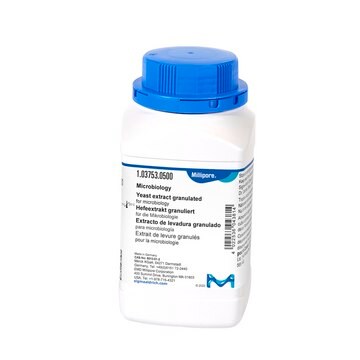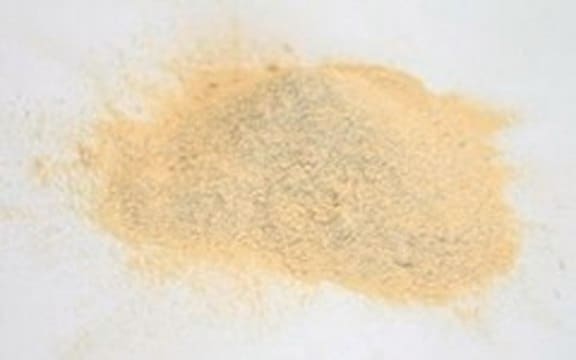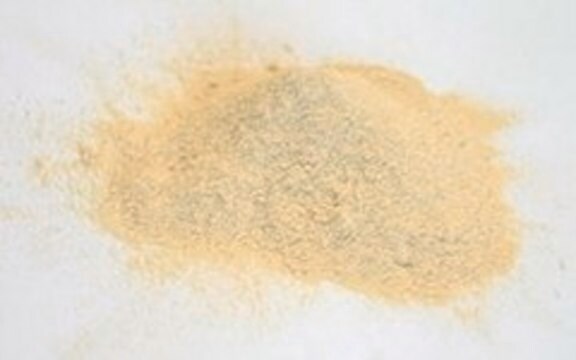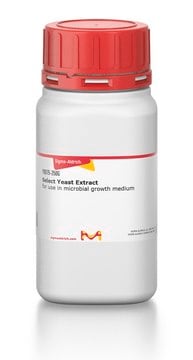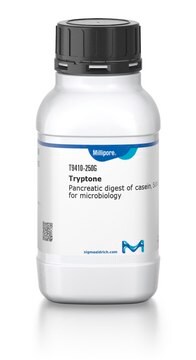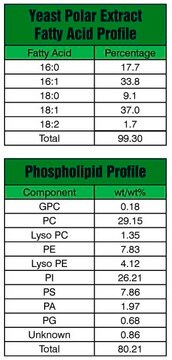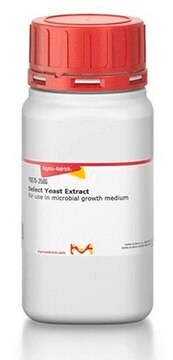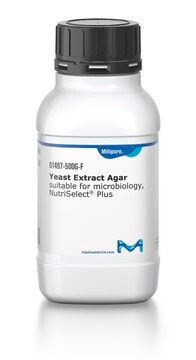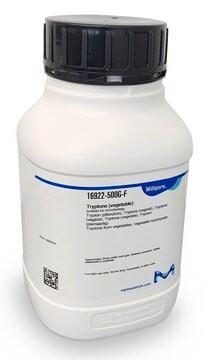Recommended Products
biological source
Saccharomyces cerevisiae
Quality Level
sterility
non-sterile
form
powder
shelf life
limited shelf life, expiry date on the label
composition
amino-N, ≥4.5%
nitrogen content, ≥9%
ign. residue
≤15%
loss
≤8.0% loss on drying
pH
5.8-6.8 (25 °C, 2% in H2O)
application(s)
food and beverages
microbiology
suitability
molds
yeasts
Looking for similar products? Visit Product Comparison Guide
Application
Analysis Note
Storage Class Code
11 - Combustible Solids
WGK
WGK 1
Flash Point(F)
Not applicable
Flash Point(C)
Not applicable
Choose from one of the most recent versions:
Certificates of Analysis (COA)
Don't see the Right Version?
If you require a particular version, you can look up a specific certificate by the Lot or Batch number.
Already Own This Product?
Find documentation for the products that you have recently purchased in the Document Library.
Customers Also Viewed
Our team of scientists has experience in all areas of research including Life Science, Material Science, Chemical Synthesis, Chromatography, Analytical and many others.
Contact Technical Service
